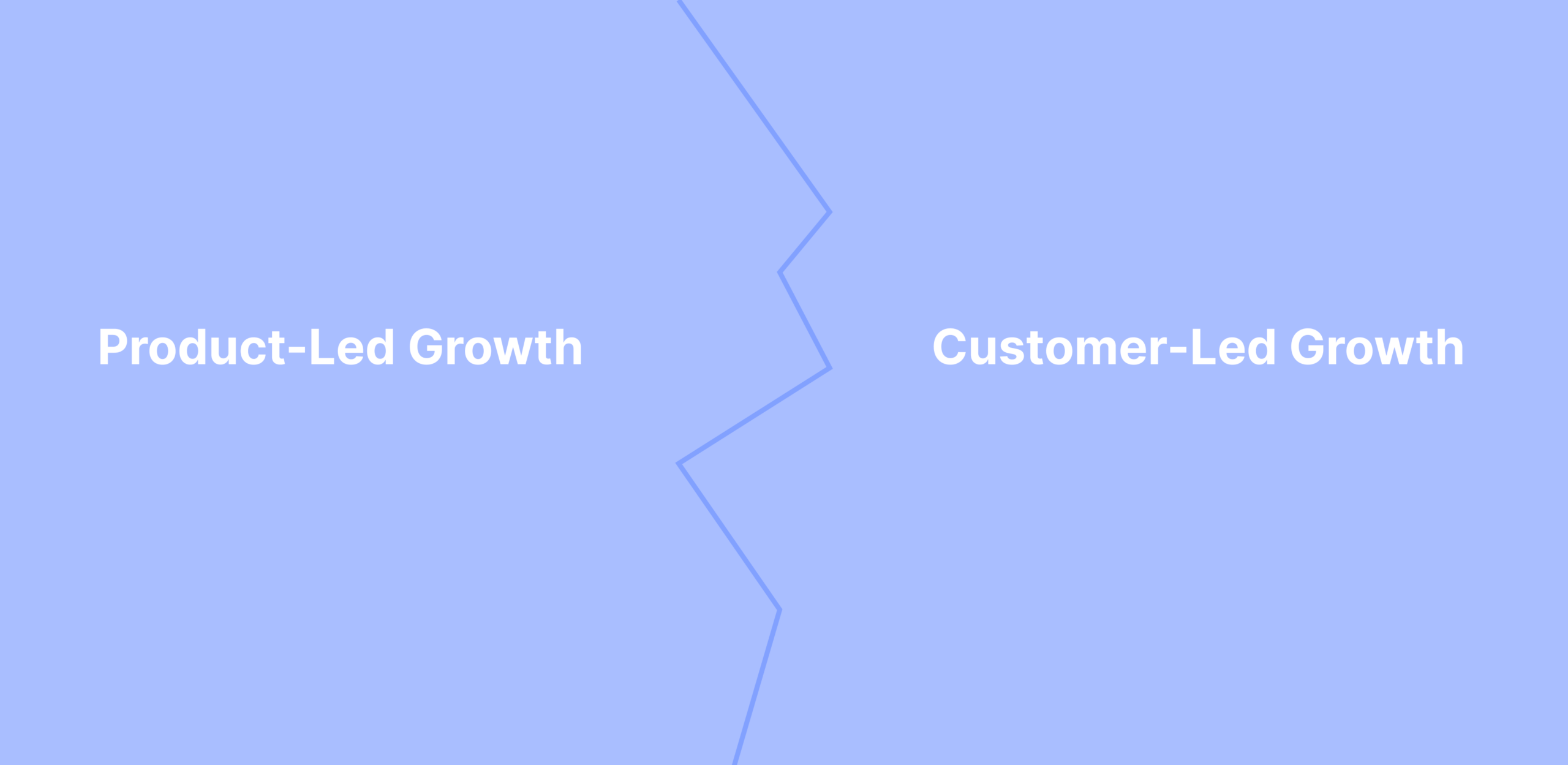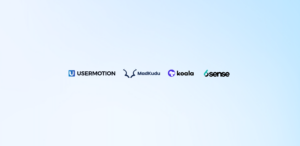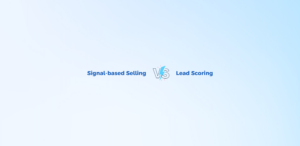Product-led Growth is one of the hottest topics in the SaaS world.
Everyone is saying that “you should adopt a PLG strategy to succeed.”
But what are the other options?
What are the other choices besides PLG to choose?
Today I’ll be uncovering the difference between product-led vs customer-led growth strategies and help you choose which one is a better fit for your business.
Or how they can be used in unison. So, Let’s start with the first question…
TL;DR
- Growth strategies help companies determine what they will prioritize during their efforts to increase conversion rates and accelerate growth.
- Product-Led Growth, the most popular strategy nowadays, puts the product in the center and focuses on making it accessible to all potential customers with minimal human interaction.
- Customer-Led Growth focuses on customer insights, and thus, comes in after the conversion is done.
- PLG and CLG aren’t all that different, and both work best when they are in unison.
- If you are just starting your business, you can use PLG as a go-to-market strategy and implement CLG as you get more and more users to collect feedback from.
Understanding Growth Strategies
Apart from supporting growth strategies such as “growth hacking”, there are four main leading components that businesses focus on:
- Product-Led Growth,
- Customer-Led Growth
- Sales-Led Growth,
- And Marketing-led Growth.
As you may have noticed, these strategies are based on all the components that bring the product and the customer together.
And what differentiates them is the reliance and importance of each of those factors.
So basically a company with a marketing-led strategy would invest more in marketing and MQLs, while a sales-led company does their best to lead most leads towards the sales team.
The Concept of Growth Strategies in Business
“To put your SaaS business in the best position to win, you need to pick a strategy that will place your business on high ground.” – Wes Bush
If you know, you know. Wes Bush is a bestselling author and an entrepreneur who excels in product-led growth. And this line summarizes what lies behind his ideology and success.
A strategy isn’t a rulebook that you have to stick to.
It is rather drawing the outlines of the path you will follow in order to stay true to your goals and reach them without friction.
So, the two strategies I have mentioned above should help you in the same.
Defining Product-Led Growth
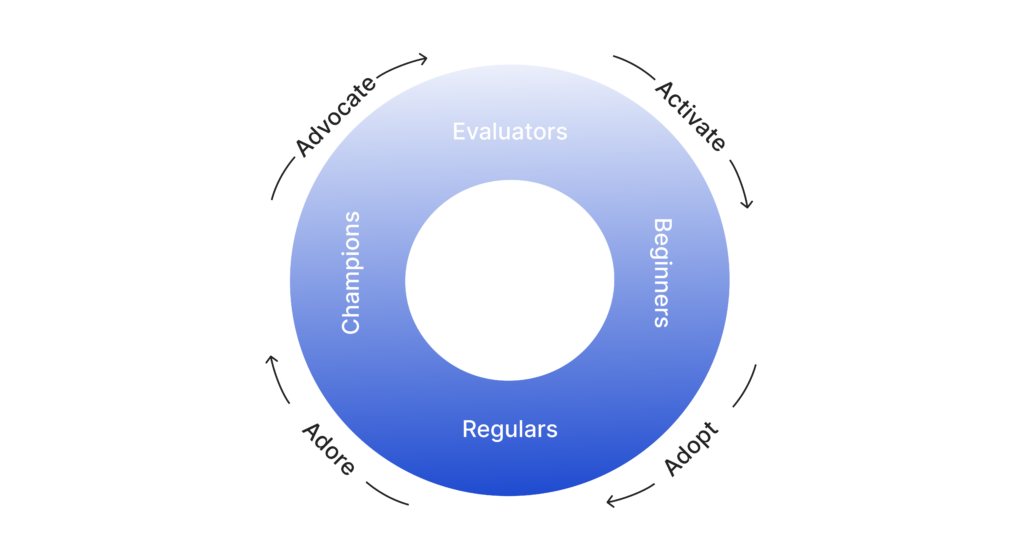
Product-led growth prioritizes self-serve conversion over anything else. It is the methodology of winning the customer’s heart, converting them, and then retaining them with minimal need for the sales or support team.
In most cases, the main communication and help channels for the users are user onboarding flows, resource centers, and knowledge bases.
Let me draw a picture of how this works:
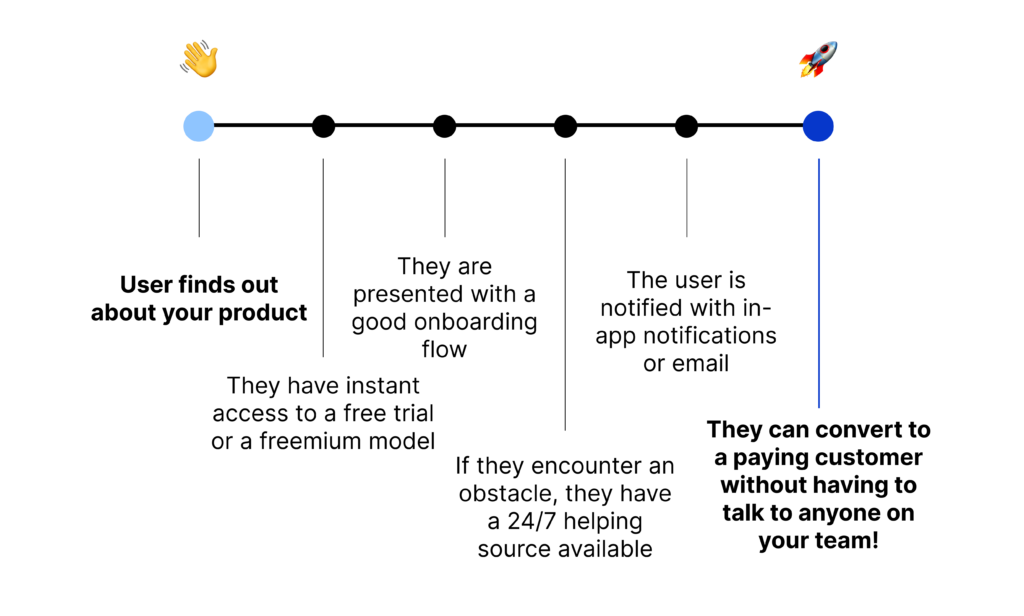
- First, the user finds out about your tool on the web. This could be on social media, on the internet, or through word-of-mouth marketing.
- When they get to your main page, they have instant access to a free trial or a freemium model. They can also clearly see your pricing breakdown and what they will be paying for exactly.
- Once they sign up for a free version of your product on their own accord, they are presented with a good onboarding flow. This could be a video, or even better, an interactive product tour.
- If they encounter an obstacle, they have a 24/7 helping source available. This could be a chatbot, a resource center, or easy access to the help center.
- Towards the end of their trial period, the user is notified with in-app notifications or email. Then, they have the chance to convert to a paying customer without having to talk to anyone on your team or go through a sales funnel.
And once you have a working conversion mechanism at hand, you can start collecting feedback on your product through in-app surveys.

It is up to you how you interpret that feedback and integrate it into your tool, but the customer’s voice plays a crucial part in the product-led growth strategy.
And so do multiple other factors.
Let me explain further:
Characteristics and Benefits of Product-Led Growth
➡️ Product-Led growth lowers the stress of all your teams.
By eliminating most of the lengthy sales processes, you allow your sales team to focus on the bigger and more important deals, and provide them with the best product to present to the leads.
The same goes for the support and success teams. Instead of dealing with 10 confused customers and repetitive tickets, they get to dedicate more time to each of them and provide tailor-made solutions since you already provide in-app training and help on your product.
➡️ PLG also enables you to get a higher Return on Investment (ROI) in a shorter time by reducing churn and time-to-value (TTV).
The initial PLG installment time could take a while, but in return, you get to take a deep breath by seeing a higher satisfaction rate and a motivated team.
As you can see, PLG doesn’t disregard the customer totally. It allows your product to grow with the customers by making everything easier for them rather than bloating your product with all the feature requests.
This takes us to our second strategy:
Exploring Customer-Led Growth
Customer-led growth, or CLG, puts the customer in the middle of all processes. It prioritizes customer feedback and gives the customer what they want.
What differentiates CLG from PLG is that CLG doesn’t rely on free trials or self-serve mechanisms to get to the customer.

It still requires a simplified approach to make the customer feel connected to your product. This means that you should provide a somewhat product-led onboarding, and then leverage it with feedback loops and close customer relations.
Key Features and Advantages of Customer-Led Growth
➡️ The Customer-Led strategy is a good driving force to encourage word-of-mouth virality.
Although most people are too busy to give feedback every couple of months, with the correct encouragement, you can get them to want to give feedback even when you aren’t conducting a thorough survey.
Show them you care about their feedback, reward them for their progress, and encourage them to invite others to your product. This way, you can make them feel like a part of the product, rather than just a user.
➡️ The Customer-Led approach also makes it easier for you to take determined steps.
If you manage to successfully implement a CLG strategy, you will gain lots of valuable insights, and draw a better roadmap.
By analyzing customer needs, what they like and what they don’t, and directly asking them what they would like to see in the future; you can guarantee major success in all your updates and launches.
Product-Led Growth vs. Customer-Led Growth
It is not only these two strategies, you could have come this far by having a sales-led or marketing-led strategy as well.
All those strategies go hand in hand.
It is up to you which one to prioritize most.
To help you decide, let’s analyze the differences and similarities between Product-Led Growth and Customer-Led growth:
The Major Difference between Product-led Growth and Customer-led Growth
The biggest difference between the two approaches is how you start.
Do you plan to attract high-quality leads with a Product-Led approach and then implement their suggestions, or do you plan to put the customer’s voice into every step you are taking from the start – even though this could mean that you may start slower?
Apart from that, both strategies are meant to go hand in hand.
Because your product can’t be useful to them without knowing what they want, and you can’t know what they want without reaching them.
Similarities in Approach and Implementation of PLG and CLG
Both product-led and customer-led strategies incorporate the same three figures:
1- Conversion as the main goal
The end goal of any strategy is similar to each other. In this case, both PLG and CLG aim to skyrocket your conversion rates.
One does this by providing the best onboarding possible, and the other does this by including the customer in all decision processes as much as possible.
2- Customer feedback as a product direction
While Customer-Led Growth builds the whole strategy around customer feedback, Product-Led Growth aims to interpret the feedback in order to improve self-serve operations rather than directly including them.
But in the end, both strategies heavily rely on customer feedback.
3- Retention as the end goal
Your revenue growth rate depends on how successful you are at retaining customers. This is because retaining customers is cheaper than acquiring new ones.
If you have high retention games, then you have cracked the SaaS code.
Both of these strategies aim to increase retention rates, the only difference is how they do it.
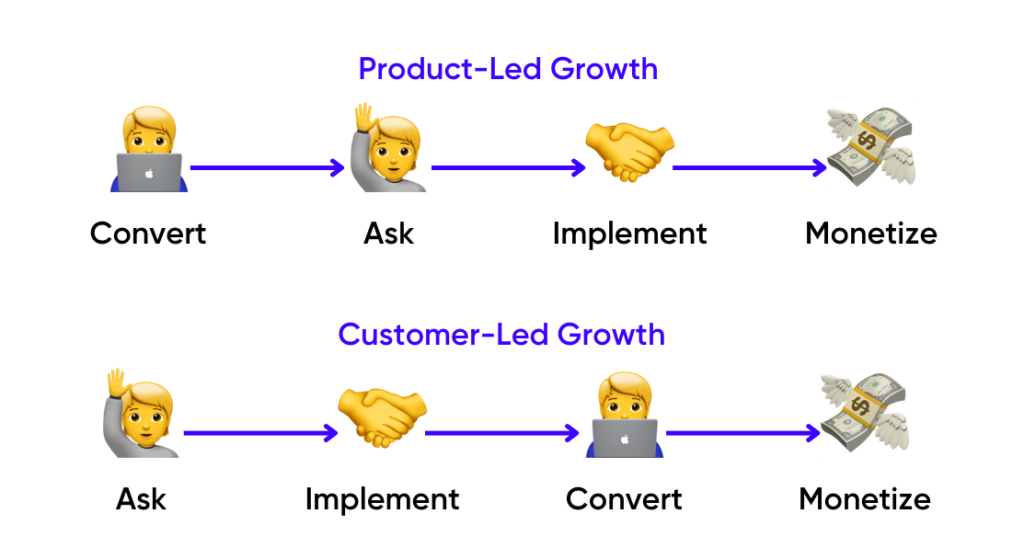
But where do you start?
Depends on whether you are just starting your business or if you are planning to switch.
Which one do you go with first?
The answer lies in your choice between Product-Led Growth vs. Customer-Led Growth.
Let’s uncover which one is better for you:
Deciding Between Product-Led vs. Customer-Led Growth
1- If you are starting a business from scratch
If you are just starting your business and don’t have a high customer count to get feedback from, you should turn your face towards a product-led strategy.
What users value the most is the accessibility, the quality of the onboarding, and the help they receive. By binding all those factors together as a bundle, and serving it to the users without needing human interaction, you will increase their likeliness to convert.
And once they do, you can start asking for feedback.
2- If you are switching strategies
But if you already have a product at hand and the tool has too many layers to uncover without a sales cycle, you can start by listening to your customers first.
See whether or not they would have liked to be onboarded without a sales cycle, or whether the demos were actually the main factor they chose your product.
Depending on the replies you get, you can start implementing PLG elements into your product one by one.
Conclusion
Product-Led growth and Customer-Led growth work best when they go hand-in-hand.
You can’t eliminate the customer’s need to get access to information quickly – which PLG provides – and neither can you completely act without any feedback – which CLG prioritizes the most.
You choose where you start from, but in order to reach accelerating growth in this century, PLG is a major factor that can help you reach your goal.
Frequently Asked Questions
PLS stands for product-led sales. PLS prioritizes the interaction between your product and the user without any friction or interference.
Product-led sales prioritize superior product development to attract and retain customers, while sales-led sales utilize an active sales team to pursue and secure customers.
Product-led growth is a growth strategy and methodology that encourages businesses to provide self-serve conversion mechanisms for the user. Product growth is the outcome of a successful growth strategy.

